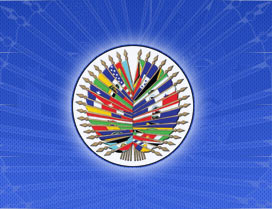 WaPo | A potentially troubling era dawned Sunday in Pakistan's Swat Valley, where a top Islamist militant leader, emboldened by a peace agreement with the federal government, laid out an ambitious plan to bring a "complete Islamic system" to the surrounding northwest region and the entire country.
WaPo | A potentially troubling era dawned Sunday in Pakistan's Swat Valley, where a top Islamist militant leader, emboldened by a peace agreement with the federal government, laid out an ambitious plan to bring a "complete Islamic system" to the surrounding northwest region and the entire country.Speaking to thousands of followers in an address aired live from Swat on national news channels, cleric Sufi Mohammed bluntly defied the constitution and federal judiciary, saying he would not allow any appeals to state courts under the system of sharia, or Islamic law, that will prevail there as a result of the peace accord signed by the president Tuesday.
"The Koran says that supporting an infidel system is a great sin," Mohammed said, referring to Pakistan's modern democratic institutions. He declared that in Swat, home to 1.5 million people, all "un-Islamic laws and customs will be abolished," and he suggested that the official imprimatur on the agreement would pave the way for sharia to be installed in other areas.
Mohammed's dramatic speech echoed a rousing sermon in Islamabad on Friday by another radical cleric, Maulana Abdul Aziz, who appeared at the Red Mosque in the capital after nearly two years in detention and urged several thousand chanting followers to launch a crusade for sharia nationwide.
Together, these rallying cries seemed to create an arc of radical religious energy between the turbulent, Taliban-plagued northwest region and the increasingly vulnerable federal capital, less than 100 miles to the east. They also appeared to pose a direct, unprecedented religious challenge to modern state authority in the Muslim nation of 176 million.


















